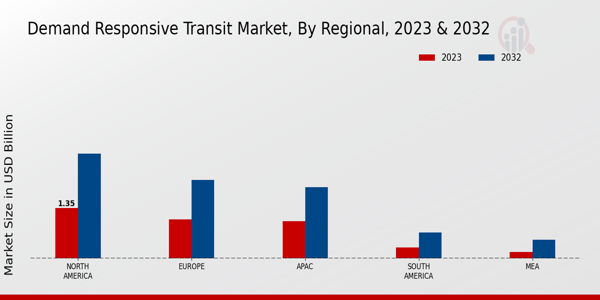The Demand Responsive Transit Market is characterized by a variety of competing players that are leveraging technology to reshape public transportation systems. As urbanization accelerates and the demand for more efficient and adaptable transportation solutions grows, companies in this sector are striving to enhance their operational frameworks.
The competitive landscape consists of traditional transit operators, startups, and technology firms that are innovating to meet customer needs. This market is marked by significant advancements in mobile applications, data analytics, and real-time tracking, leading to a more flexible and user-centric approach to transportation.
As competition intensifies, firms are increasingly focusing on partnerships and collaborations to expand their service offerings and improve user experience, positioning themselves favorably in a rapidly evolving market.
Moovit is a prominent player within the Demand Responsive Transit Market, recognized for its robust platform that empowers users to navigate transit options efficiently. The company stands out for its comprehensive mobility-as-a-service solutions, integrating various public and private transportation services into a singular application that enhances user convenience.
With a focus on real-time data analytics and user-generated content, Moovit provides accurate routing information and updates, which are essential in catering to the dynamic demands of urban commuters.
Its ability to adapt to local transit systems and customize solutions according to specific geographical requirements strengthens its market presence, allowing cities to improve their transit efficiencies through collaboration.
The combination of advanced technology, user-centric design, and strong industry partnerships contributes significantly to Moovit's competitive advantage in the demand-responsive transit sector. Chariot has established itself as a key player in the Demand Responsive Transit Market by focusing on shuttle services that cater to corporate and community commuting needs.
The company's model emphasizes shared transportation solutions that effectively reduce single-occupancy vehicle use, thereby promoting an eco-friendly approach to urban mobility. Chariot leverages an efficient platform to offer tailored routes based on user demand, thereby enhancing operational efficiency while ensuring cost-effectiveness for riders.
The integration of user feedback into service planning allows Chariot to continually refine its offerings, ensuring that transportation solutions remain relevant and attractive to users. This agile approach to responding to urban commuting patterns showcases Chariot's strengths in adapting to the changing landscape of demand-responsive transit, making it a competitive force in the market.





















